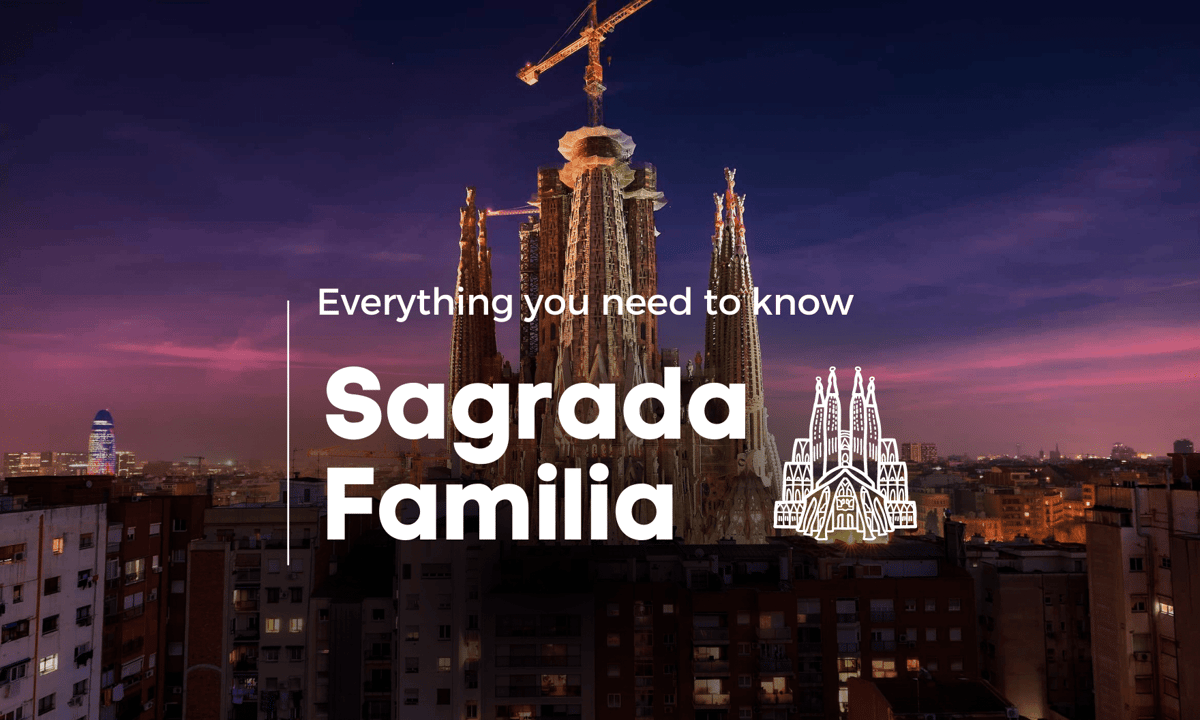The natural forms de la Sagrada Família, or the Expiatory Temple of the Holy Family, is a well-known symbol of Barcelona and a popular destination for tourists. Initially, the construction was meant to be a simple Roman Catholic church dedicated to Jesus, Mary and Joseph, but it eventually became an example of Catalan Modernism.
Erected to the design of Antoni Gaudí, the place of worship conveys his belief that nature is the work of God and incorporates complex natural symbols like organic and geometric shapes in its architecture, columns, pinnacles, and stained glass windows.
Even its incompleteness, the church is yet to be finished, hints at the work in progress which our natural existence, has been, just akin to Gaudi's art...
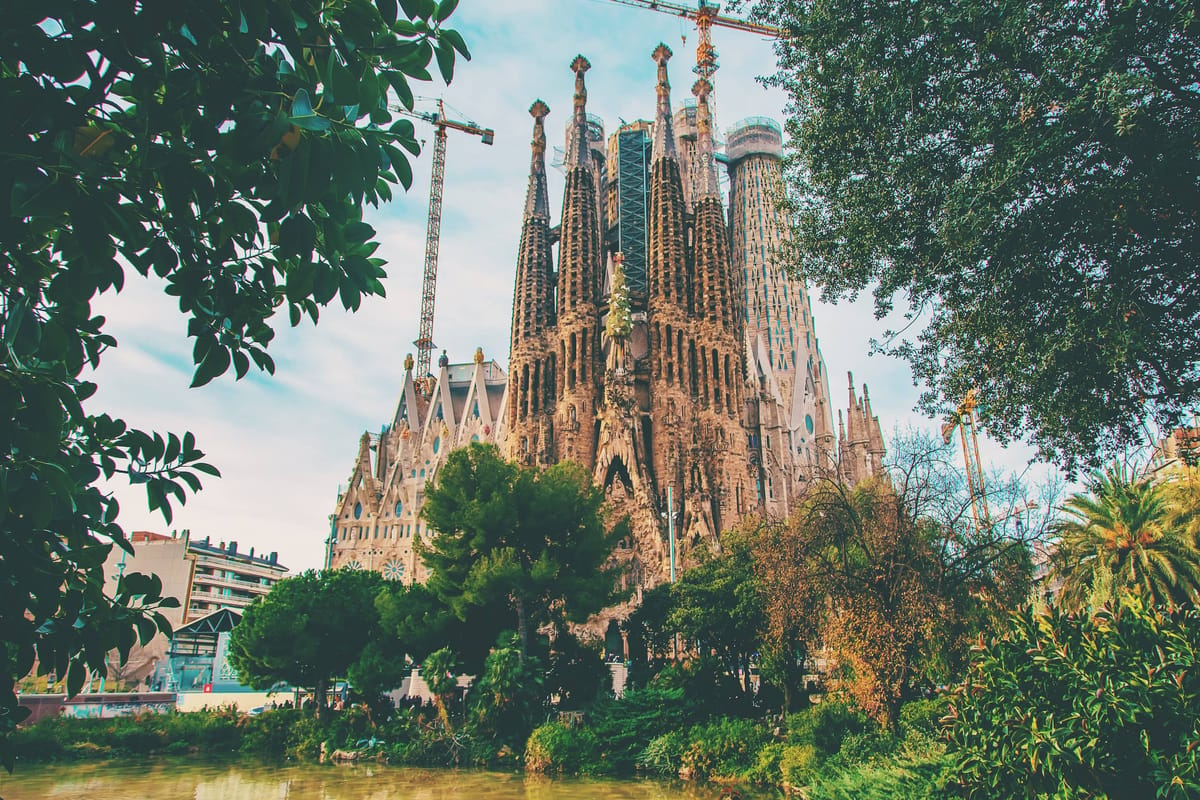
The history of La Sagrada Familia, the stunning church of the Holy Family
The Sagrada Familia's history is a testament to the vision and perseverance of the people who made it possible; it is also one of the city of Barcelona's most engrossing stories of success from humble origins.
Josep Maria Bocabella, a local bookseller, originally wanted to build an expiatory temple dedicated to the Holy Family and commissioned Francesc de Paula del Villar to design it. However, disagreements arose between Bocabella and Villar, and Antoni Gaudí was brought in to take over.
Gaudí aimed to create a church with facades that represented the three phases of Jesus' life and incorporated organic symbolism in the architecture to tell Jesus' story and highlight key biblical histories, yet since Gaudí died at the age of 73, overrun by a tram on a busy Barcelona thoroughfare, back in 1926, the basilica has not been completed, reminding of the ephemeral nature of being, not only in art but also in life.
Note that one of the main highlights of la Sagrada Familia is the statue to the Virgin Mary, as well as the most controversial part of the church, the much-discussed Passion Facade, whose creator, Josep Maria Subirachs, has been heavily lambasted quite a bit for swerving away from following Gaudí’s model and wandering away into the realm of abstraction.
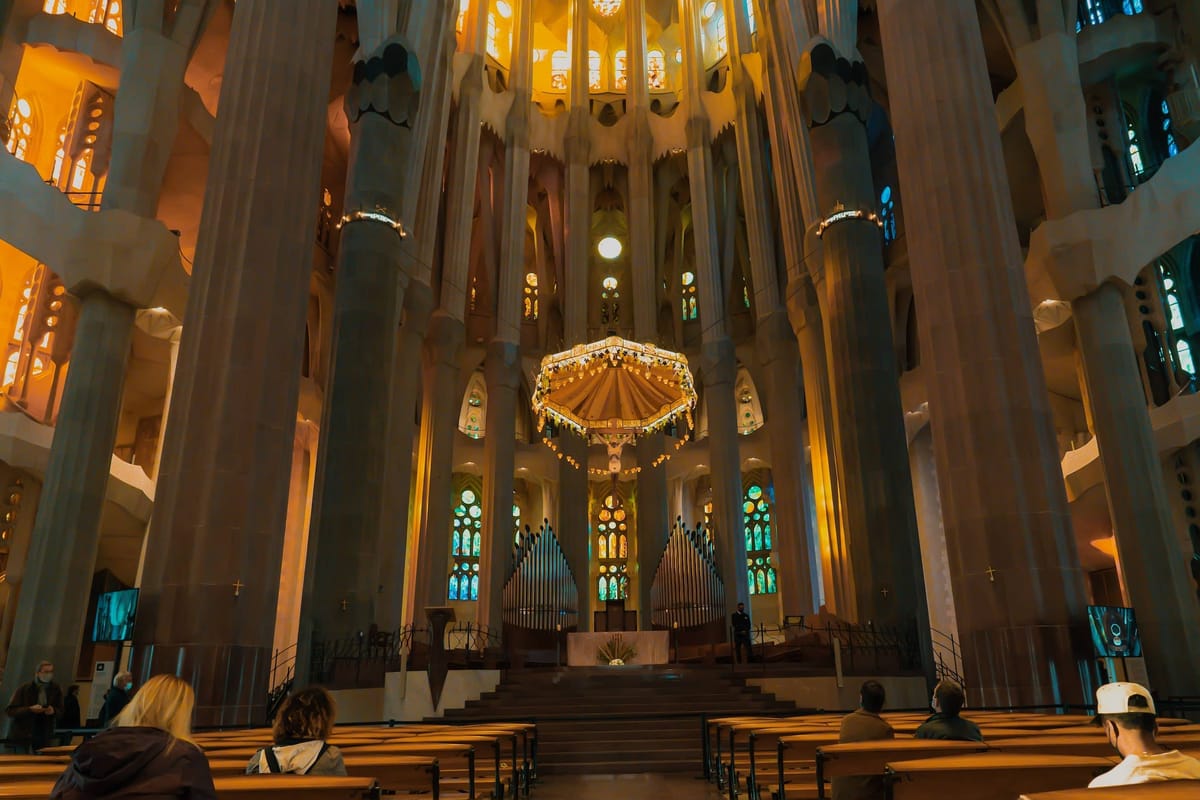
The Spanish Civil War and its impact on the La Sagrada Familia
Although la Sagrada Familia has been in the works for almost 140 years, it remains an architectural masterpiece and a popular destination.
La Sagrada Familia was heavily damaged during the Spanish Civil War, so vividly depicted by the ilk of George Orwell, Ernest Hemingway, Victor Serge and Arthur Koestler, but restoration efforts began in 1954 and have continued since then.
Despite state-of-the-art technology, the complex geometric shapes of the Sagrada Familia have proven challenging to bring to completion, and the church relies on private donations for funding, which makes it hard to predict when the quirky masterpiece will be completed.
Yet the stunning nativity façade along with other elements of the basilica's exterior and interior, for example, the stunning Central Nave, and not only the crypt, making it one of Barcelona's topmost tourist attractions along with its Middle Ages heritage sites.
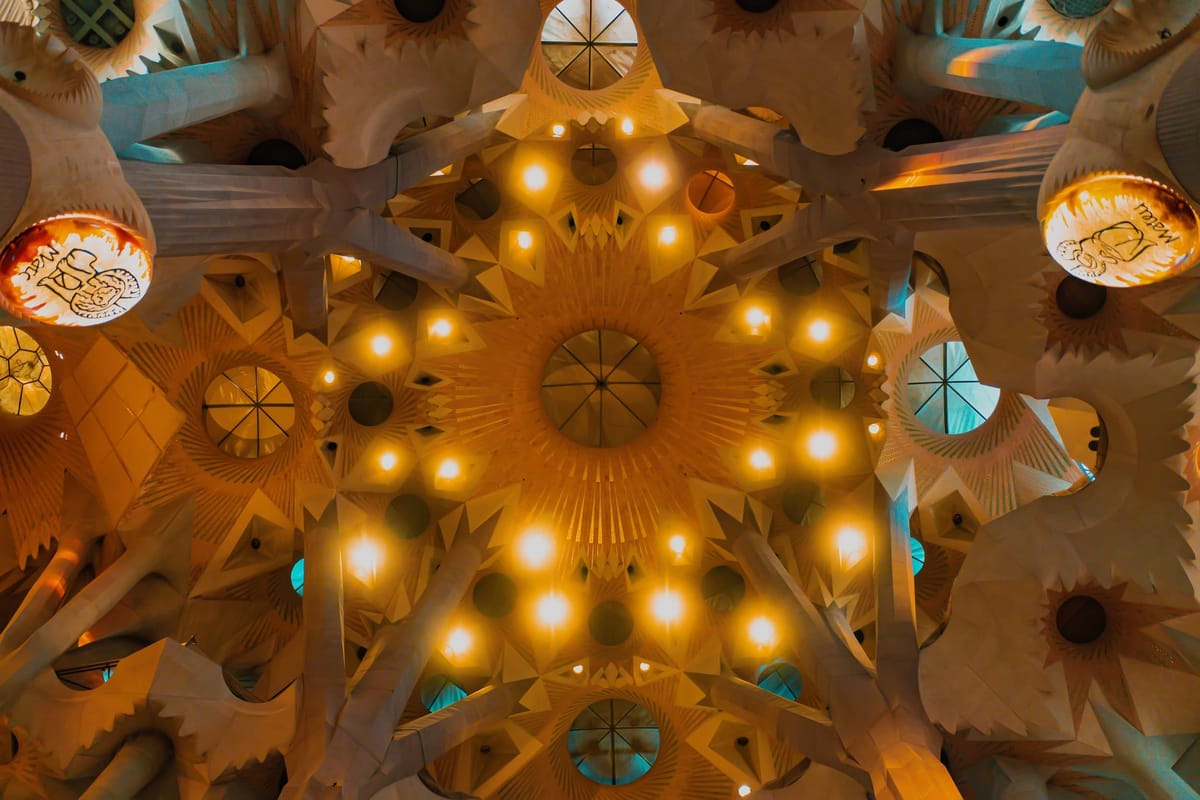
The present of la Sagrada Familia
The Sagrada Família was expected to be accomplished in 2026, the centenary of the death of Antoni Gaudi, yet the worldwide COVID-19 pandemic has pushed back the completion date.
The visitors to la Sagrada Familia can currently only access the basilica, with tickets available for individual visits with an audio guide app in 16 languages or guided tours in six languages.
The basilica features five naves built in the shape of a Latin cross, with a treelike column structure that creates the effect of you walking through a jungle with dappled light gushing in.
But for sure it is the exterior that stuns: have a look at La Sagrada Familia's stunning nativity facade, one of the prime examples of Gaudí's naturalistic style
Note that Gaudi's death did not put stop to its construction, partly as a result of the architect's efforts, he started working first not on the naves and the like but choose instead to fashion the prayer house's exterior, in a bid to outwit a human's mortality, something to which he seems to have been aspiring throughout his career as an artist and an architect.
Additionally, you can pay a visit to La Sagrada Familia's Gaudí Museum: it showcases a copy of the architect's workshop, as well as a set of his materials and models and replicas of his oeuvres.
Finally, have a look inside La Sagrada Familia's School, designed by Gaudí in 1909, put up for the children of workers and features a design similar to that of the basilica.
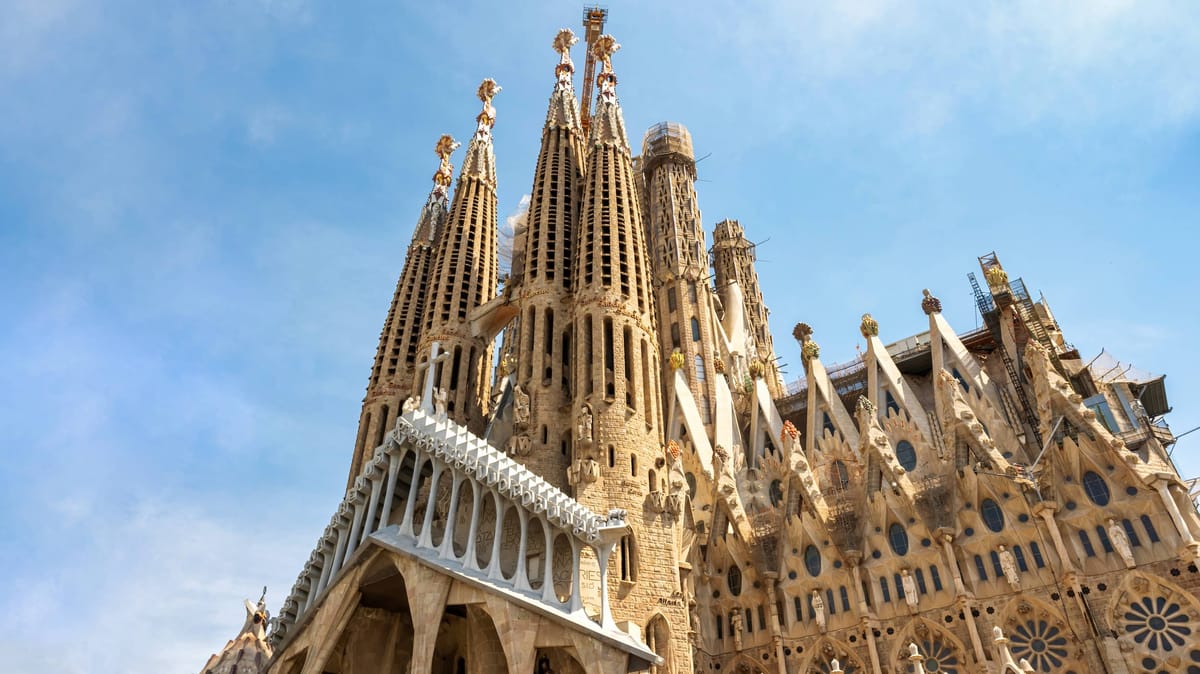
How to go to Sagrada Família?
Experience the ultimate convenience and comfort as you book a private transfer from Barcelona airport with Andy, the premier booking platform for long-distance rides, directly to the architectural masterpiece that is the Sagrada Familia. Andy guarantees a hassle-free journey, allowing you to soak in the vibrant culture and rich history of Barcelona without worrying about navigating public transportation or haggling with taxi drivers. With just a few clicks on their user-friendly website or mobile app, secure your personalized ride and let Andy's professional, knowledgeable drivers whisk you away to Gaudí's iconic basilica, ensuring a memorable start to your Spanish adventure.
Where to eat near la Sagrada Família
Even though the area where the stunning Catalan Modernism Cathedral is situated is quite touristy, making grabbing a grub quite costly here, there are a lot of budget options in the La Sagrada Família vicinity.
Here, for example, you can make your way to the La Sagrada Familia's surrounding areas, where you can find a nice tacos bar and tuck into the mouthwatering Catalan tacos, as well as some authentic Catalan fare, washed down with the area's ambrosial wine.
The best places to eat out near la Sagrada Família and Gaudi museum are the following: Braseria La Selva Barcelona; Jamon Y Vino Paella, quite expensive, and La Trocadero Vegan Burger Joint, perfect for a quick snack during your Sagrada Familia tour.
Where to stay near la Sagrada Família
Note that putting up close to the la Sagrada Família is quite costly. Prices can feel quite biting in the place of worship's immediate neighbourhood, yet there are many budget options to lodge at a walking distance from the stunning basilica, done out in the impressive Catalan Modernism style.
The best places for a nice stay within the walking distance from la Sagrada Familia are La Hola Hostel, JAM Hostel Barcelona or Bad and Bike hostel, perfect for active backpackers travelling in downtown Barcelona on a shoestring.
What to do in la Sagrada Família's environs
Note that a visit to the cathedral usually takes up to three hours, and will set you back 26 euros for a solo tour and 27 euros for a guided tour, with a chance to explore the extravagant prayer house for free, after the 50 minutes guided walk-around...
Bonus
Keep in mind that la Sagrada Familia is one of the best places in Barcelona to spend Christmas, along with Barcelona Christmas Markets, and the stunning Barcelona beaches...
Also note that it was Pope Benedict XVI who granted the prayer house the status of a basilica, making the masterpiece into one of Spain's main places of religious significance. Not to mention, it is pushed one notch further in the pantheon of Barcelona's prime architectural landmarks, to join other stunning works of art like Antoni Gaudi-designed Casa Batlló, situated on Paseign Garcia, or Park Güell, which along with Middle Ages Barcelona architectural marvels make up the cannon of Catalan architecture.

